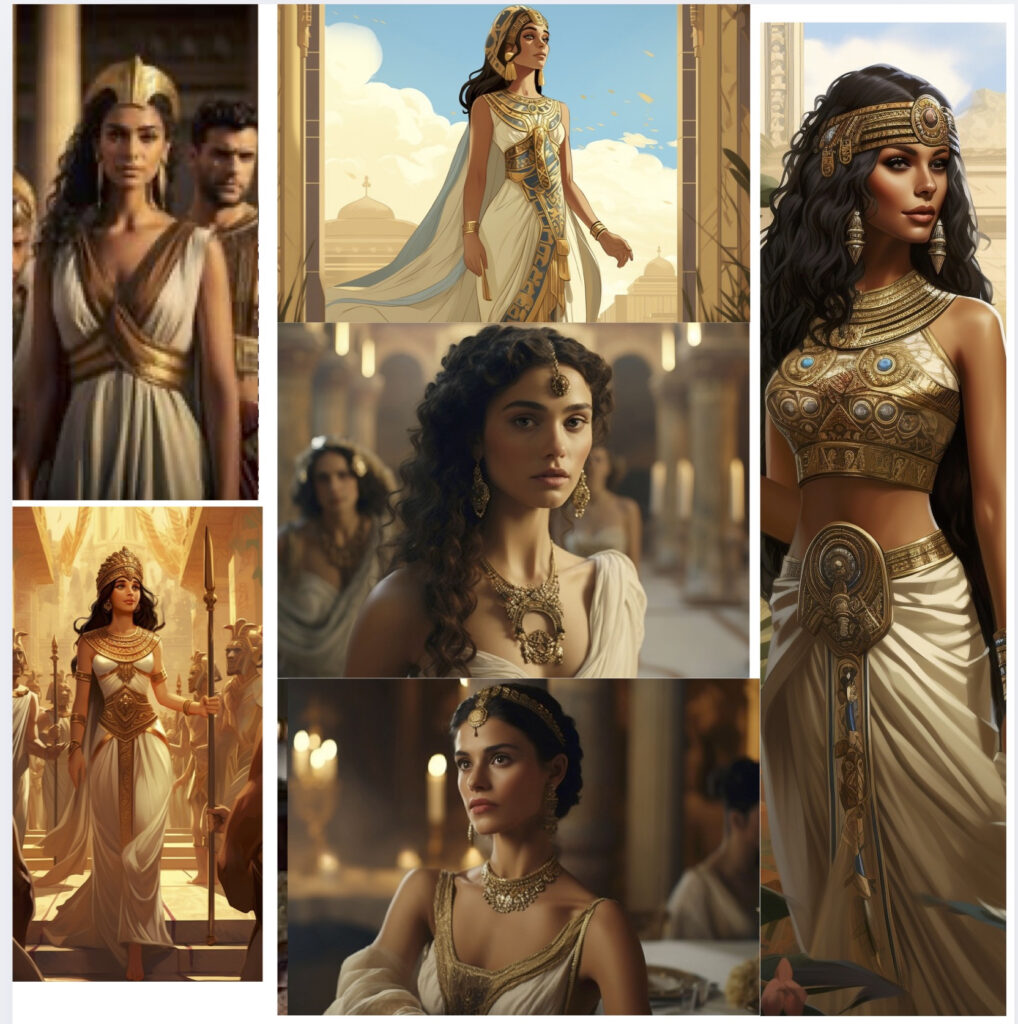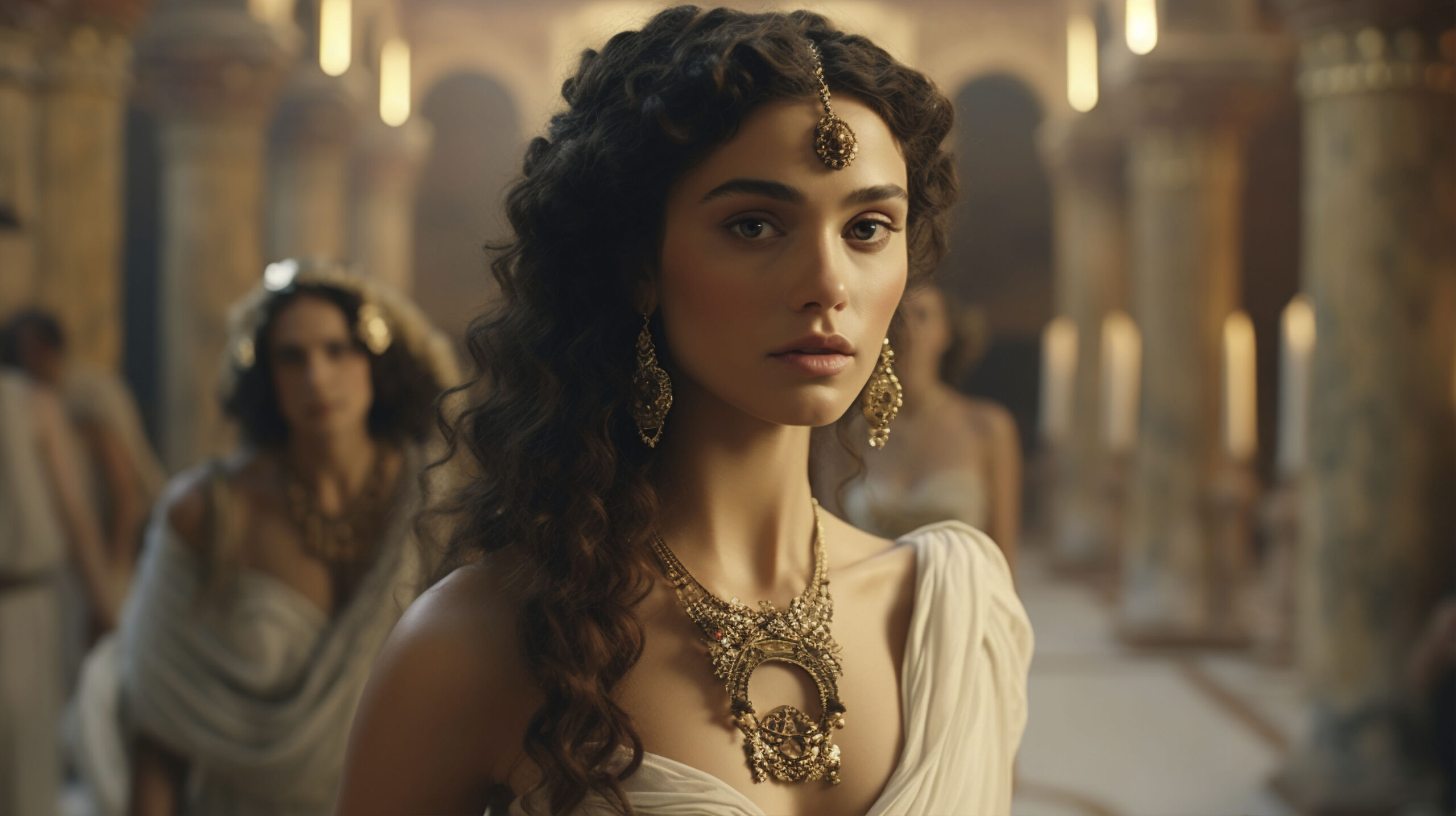“Along the Nile, fashion flowed like the sacred river itself—eternal, life-giving, and divinely inspired.”
-Dinis Guarda
Egyptian fashion represented humanity’s first sartorial philosophy, where clothing served simultaneously as protection, status symbol, and spiritual expression. Although aware of other materials, the ancient Egyptians mostly used linen, a product made from the abundant flax plant. Due to a belief that animal-based fabrics were impure, wool was rarely used and was forbidden in places like temples and sanctuaries.
Along the Nile, fashion achieved a perfection that has rarely been equalled in human history. Egyptian dress represented the synthesis of practical necessity, aesthetic refinement, and spiritual significance that transformed clothing into a form of material prayer. The Egyptians developed the first comprehensive fashion philosophy, understanding that clothing could serve simultaneously as protection from the elements, marker of social status, and expression of divine connection.
Linen became the cornerstone of Egyptian fashion, chosen for its practical properties and for its symbolic significance. The plant’s transformation from humble flax to luminous white fabric paralleled the human soul’s journey from earthly existence to divine transcendence. The finest Egyptian linen, woven so delicately it was nearly transparent, represented the ultimate achievement in textile production—fabric that seemed to be made of solidified light itself.
Egyptian garment construction celebrated geometric precision whilst accommodating the human form’s natural curves. The basic Egyptian garments—the schenti loincloth, the kalasiris tunic, and the ceremonial mantles—were created from rectangular pieces of fabric, demonstrating sophisticated understanding of how simple geometric forms could be draped to create complex three-dimensional effects. This mathematical approach to fashion established principles of proportion and balance that continue to influence contemporary design.
The Egyptians pioneered the concept of fashion accessories as artistic statements. Their elaborate headdresses, from the simple linen headband to the pharaoh’s complex nemes, transformed the human head into a canvas for artistic expression. Jewellery served as decorative purposes and as protective and symbolic functions, with specific amulets ensuring safe passage through both earthly dangers and the perils of the afterlife. Here, fashion transcended the aesthetic to become metaphysical.
Linen as Luxury
The supremacy of linen in Egyptian fashion stemmed from both practical and spiritual considerations. Linen’s breathability suited the desert climate whilst its white purity aligned with religious beliefs. The finest linen, so delicate it was nearly transparent, became a marker of the ultimate sophistication.
Garment Geometry
Egyptian clothing celebrated the human form through geometric precision. The fundamental garments—the schenti (loincloth), kalasiris (tunic), and the mantles—were constructed from rectangular pieces of fabric, creating clean lines that complemented Egyptian art’s linear aesthetics.
Accessories as Art
Egyptian fashion pioneered the concept of accessories as artistic statements. Elaborate headdresses, including the iconic nemes (striped head-cloth of pharaohs), transformed the wearer into living sculpture. Jewellery wasn’t mere adornment but served protective and symbolic functions, with amulets ensuring safe passage to the afterlife.
Key Benchmarks
| Period | Innovation | Significance |
| 3100 BCE | Linen cultivation | Established Egyptian textile foundation |
| 2686 BCE | Royal regalia | Pharaonic fashion standards |
| 2000 BCE | Pleated garments | Advanced textile manipulation |
| 1550 BCE | Imported luxuries | International fashion influence |
| 332 BCE | Hellenistic fusion | Greek-Egyptian style synthesis |
Dinis Guarda – with Jasmeen Dugal
Dinis Guarda is an author, academic, influencer, serial entrepreneur, and leader in 4IR, AI, Fintech, digital transformation, and Blockchain. Dinis has created various companies such as Ztudium tech platform; founder of global digital platform directory businessabc.net; digital transformation platform to empower, guide and index cities citiesabc.com and fashion technology platform fashionabc.org. He is also the publisher of intelligenthq.com, hedgethink.com and tradersdna.com. He has been working with the likes of UN / UNITAR, UNESCO, European Space Agency, Davos WEF, Philips, Saxo Bank, Mastercard, Barclays, and governments all over the world.
With over two decades of experience in international business, C-level positions, and digital transformation, Dinis has worked with new tech, cryptocurrencies, driven ICOs, regulation, compliance, and legal international processes, and has created a bank, and been involved in the inception of some of the top 100 digital currencies.
He creates and helps build ventures focused on global growth, 360 digital strategies, sustainable innovation, Blockchain, Fintech, AI and new emerging business models such as ICOs / tokenomics.
Dinis is the founder/CEO of ztudium that manages blocksdna / lifesdna. These products and platforms offer multiple AI P2P, fintech, blockchain, search engine and PaaS solutions in consumer wellness healthcare and life style with a global team of experts and universities.
He is the founder of coinsdna a new swiss regulated, Swiss based, institutional grade token and cryptocurrencies blockchain exchange. He is founder of DragonBloc a blockchain, AI, Fintech fund and co-founder of Freedomee project.
Dinis is the author of various books. He has published different books such “4IR AI Blockchain Fintech IoT Reinventing a Nation”, “How Businesses and Governments can Prosper with Fintech, Blockchain and AI?”, also the bigger case study and book (400 pages) “Blockchain, AI and Crypto Economics – The Next Tsunami?” last the “Tokenomics and ICOs – How to be good at the new digital world of finance / Crypto” was launched in 2018.
Some of the companies Dinis created or has been involved have reached over 1 USD billions in valuation. Dinis has advised and was responsible for some top financial organisations, 100 cryptocurrencies worldwide and Fortune 500 companies.
Dinis is involved as a strategist, board member and advisor with the payments, lifestyle, blockchain reward community app Glance technologies, for whom he built the blockchain messaging / payment / loyalty software Blockimpact, the seminal Hyperloop Transportations project, Kora, and blockchain cybersecurity Privus.
He is listed in various global fintech, blockchain, AI, social media industry top lists as an influencer in position top 10/20 within 100 rankings: such as Top People In Blockchain | Cointelegraph https://top.cointelegraph.com/ and https://cryptoweekly.co/100/ .
Between 2014 and 2015 he was involved in creating a fabbanking.com a digital bank between Asia and Africa as Chief Commercial Officer and Marketing Officer responsible for all legal, tech and business development. Between 2009 and 2010 he was the founder of one of the world first fintech, social trading platforms tradingfloor.com for Saxo Bank.
He is a shareholder of the fintech social money transfer app Moneymailme and math edutech gamification children’s app Gozoa.
He has been a lecturer at Copenhagen Business School, Groupe INSEEC/Monaco University and other leading world universities.













